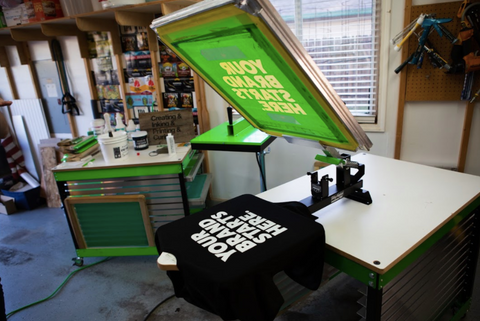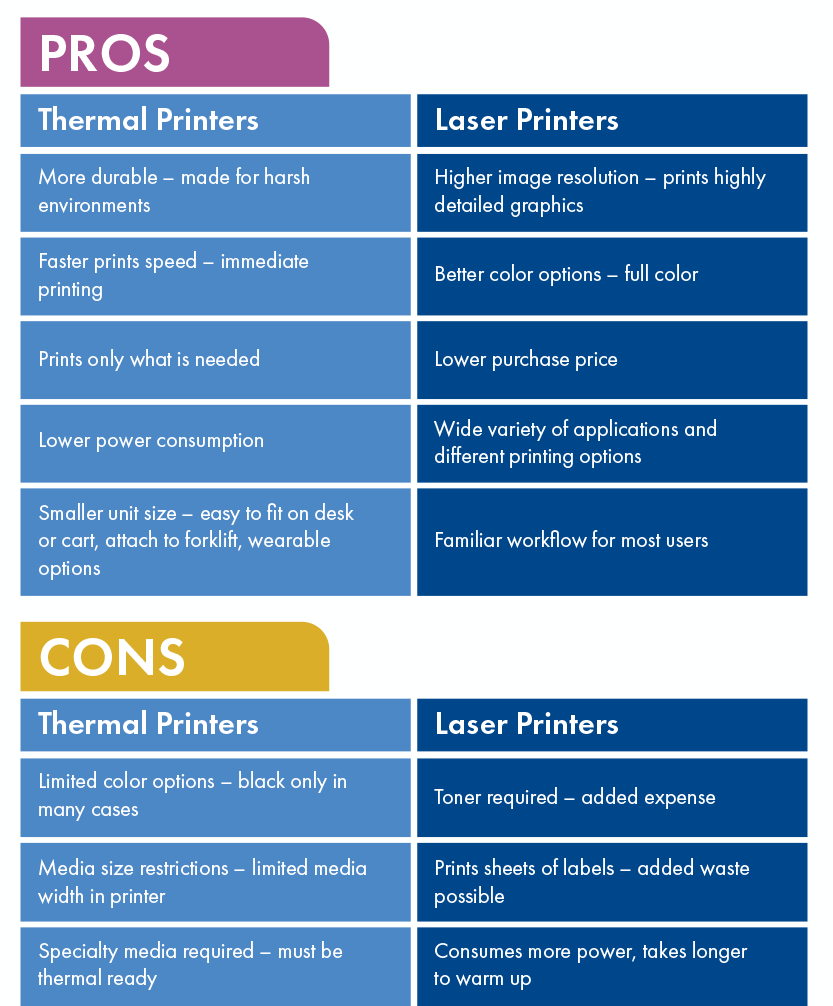BLOG
Heat Transfer Printing vs. Screen Printing – Which is Better for T-Shirt Design?
When it comes to t-shirt design, the choice of printing technique can significantly influence the final product’s quality, cost, and longevity. In the age of custom apparel, two predominant methods have emerged: heat transfer printing and screen printing. In this article, we will explore “Heat Transfer Printing vs. Screen Printing – Which is Better for T-Shirt Design?” to help you make an informed decision based on your specific needs. Both methods offer unique advantages and limitations, so understanding their fundamental differences is essential for anyone looking to create customized shirts, whether for personal use, promotional events, or brand merchandising.
Introduction to T-Shirt Printing Methods
T-shirt printing methods have evolved rapidly in recent years, providing designers and businesses with an array of options to create custom apparel. Among these methods, heat transfer printing and screen printing stand out due to their distinct characteristics, applications, and outcomes. While both techniques serve the same purpose of transferring designs onto fabric, they differ significantly in terms of materials used, production processes, and the quality of the final product. Understanding these differences will aid in deciding which method suits your needs best. As we delve into each printing technique, you will discover their unique processes, advantages, and potential drawbacks.
Overview of Heat Transfer Printing
Heat transfer printing is a method that involves transferring a design from a specialized transfer paper onto a garment using heat and pressure. This technique is particularly popular for its versatility and ease of use. The process begins with a digital design being printed onto transfer paper using inkjet or laser printers. Once the design is printed, a heat press is utilized to apply heat and pressure to the transfer, bonding the design to the fabric fibers. This allows for intricate designs, including photographs and multiple colors, to be easily achieved.
One of the primary advantages of heat transfer printing is the ability to produce small batches or even a single item, making it an ideal choice for personalized items or short-run production. For example, if a company wanted to create a limited edition t-shirt for a special event, heat transfer printing could efficiently meet this demand. Additionally, the materials used in heat transfer can often be sourced at a lower initial cost, attracting hobbyists and entrepreneurs looking to enter the custom apparel market without significant investment.
Overview of Screen Printing
Screen printing, also known as silkscreen printing, is a traditional method that has been used for decades to create designs on textiles. This process involves creating a stencil (or screen) of the desired design and then pushing ink through the screen onto the fabric below. Each color in a design requires a separate screen, making this technique more labor-intensive and time-consuming for multi-colored designs.
Despite the initial setup costs, screen printing is favored for its ability to produce high-volume batches efficiently. For instance, screen printing is often employed by clothing brands looking to produce thousands of shirts for promotional campaigns, concerts, or merchandise due to its speed and economic viability at scale. The end product tends to be vibrant, durable, and perfectly suited for various types of fabrics, which can be an appealing factor for businesses focused on quality.
Key Differences Between Heat Transfer and Screen Printing
Understanding the differences between heat transfer and screen printing can help potential users select the method that aligns with their goals, whether commercial or personal. Several key aspects differentiate the two processes, with implications for durability, color vibrancy, cost-effectiveness, and more. Below, we’ll look closely at each of these factors.
Durability and Longevity
One of the primary concerns when selecting a t-shirt printing method is the durability of the printed design. Screen printing generally outperforms heat transfer printing regarding longevity. The inks used in screen printing penetrate the fabric fibers, leading to a strong bond that withstands multiple washes and wears. According to studies, screen printed shirts can last up to 50 washes or more before showing significant wear or fading.
In contrast, heat transfer designs can be prone to peeling, cracking, or fading over time, particularly if not applied correctly. The lifespan of heat transfer prints often averages around 25-30 washes, contingent upon the type of transfer paper and application technique used. However, advancements in transfer materials, such as the use of high-quality vinyl, have enhanced the durability of heat-transfer prints, making them more competitive.
Color Vibrancy and Accuracy
When it comes to color vibrancy and accuracy, heat transfer printing offers considerable advantages. This technique can produce intricate, full-color images similar to photographs, making it an excellent choice for designs that require detailed graphics or gradients. For instance, a custom t-shirt featuring a photographic print would ideally utilize heat transfer printing to ensure accurate color representation and detail.
On the other hand, while screen printing achieves vibrant colors, especially with solid colors, its limitation arises with complex designs involving many colors or gradients. Each color requires a separate screen, which can lead to a less precise color match if not executed correctly. Businesses focusing on artistic and intricate designs may find heat transfer printing the more effective option.
Setup Time and Costs
The setup time and costs associated with heat transfer and screen printing significantly impact the choice between the two methods. Heat transfer printing typically requires minimal setup. The process is straightforward, allowing designs to be printed and pressed onto fabric quickly. This makes it suitable for short orders and custom items, enhancing its appeal for small businesses and hobbyists.
Conversely, screen printing generally entails significant setup requirements, especially for multi-color designs. The preparation of screens and aligning them for accurate layering can be time-consuming, which is why screen printing is most efficient for larger production runs. Although initial setup may be more expensive due to screen creation, the price per unit decreases significantly with larger orders, making it cost-effective for bulk purchasing.
Pros and Cons of Heat Transfer Printing
While heat transfer printing offers various benefits, it also has its limitations. Knowing these pros and cons can help users assess whether this method is right for their t-shirt design needs.
Advantages of Heat Transfer Printing
Heat transfer printing presents several notable advantages that cater to specific printing requirements. Firstly, it boasts a strong capacity for producing highly intricate and vibrant designs with a wide array of colors. This method allows for detailed imagery, which is particularly valuable for designers aiming for photographic quality on garments. The crisp edges and vibrant hues achieved through heat transfer printing can significantly enhance the visual appeal of a t-shirt, making it attractive to consumers.
Secondly, heat transfer printing is incredibly versatile in terms of materials. It works well on various fabric types, including cotton, polyester, and blends, providing flexibility for different apparel ranges. Additionally, the ease of creating custom designs means that individuals and businesses can respond promptly to trends, resulting in a dynamic and ever-evolving product line.
Moreover, one of the most significant advantages lies in the low minimums required for production. Heat transfer printing is especially appealing to small businesses or individuals looking to create limited edition or custom clothing, as there is often no need for large-scale production runs. This accessibility democratizes the process of creating customized apparel, making it a viable option for artists, influencers, and entrepreneurs alike.
Disadvantages of Heat Transfer Printing
While heat transfer printing offers many advantages, it also comes with several notable drawbacks that can affect the quality, durability, and costs associated with t-shirt design. One significant disadvantage is the durability of the prints. Heat transfer prints can wear off over time, especially when subjected to multiple washes or harsh laundering processes. Typically, heat transfer prints are less resilient to abrasions and can peel or crack, particularly if not applied correctly or if lower quality materials are used.
Another concern is the feel of the finished product. Heat transfer prints may result in a thicker texture on the fabric because the transfer material doesn’t fully integrate into the garment. This can lead to stiffness, which may be uncomfortable for the wearer, particularly in designs that cover a wider area of the shirt.
Heat transfer printing also tends to have limitations when it comes to the range of colors and designs that can be effectively printed. While digital heat transfer technologies can create vibrant designs, the production process can be limited to fewer colors compared to screen printing, potentially resulting in less intricate designs.
Furthermore, the initial setup costs for heat transfer printing can be surprisingly high, especially when factoring in the need for specific heat presses and materials. For small quantities, the cost-effectiveness of heat transfer printing may diminish quickly if considering the cost per item, as opposed to bulk orders where screen printing truly shines.
Lastly, heat transfer prints may not perform well on certain fabric types. Synthetic fabrics may not respond well to the heat involved in the transfer process, ultimately affecting the overall quality and wearability of the shirt.
Pros and Cons of Screen Printing
Screen printing is a popular method for t-shirt design that has been employed for decades. While it offers a range of benefits, it is important to consider both its advantages and disadvantages to determine if it is the right method for a given project.
Advantages of Screen Printing
One of the most significant advantages of screen printing is its durability. Screen printed designs are known to last longer than those made with heat transfer printing, as the ink is absorbed into the fabric rather than sitting on top of it. As a result, screen printed items withstand numerous washes without losing vibrancy or integrity, making them ideal for apparel meant for long-term use.
Additionally, screen printing is highly effective for large production runs. Once the setup is complete, printing multiple pieces becomes efficient and cost-effective. This technology enables excellent color consistency for bulk orders, as each shirt can be printed with the same ink and technique without variations.
Screen printing offers a vast range of ink types, including water-based inks, plastisol inks, and specialty inks that enhance the look and feel of the fabric. For instance, water-based inks impart a soft, breathable quality that many consumers prefer, whereas plastisol inks can yield bright, opaque designs on darker materials. Moreover, specialized inks like glow-in-the-dark or metallic further expand creative possibilities.
Finally, the versatility of screen printing is noteworthy. It’s compatible with various fabric types, including cotton, polyester, blends, and more, broadening the scope for designers and businesses looking to customize apparel.
Disadvantages of Screen Printing
Despite its many advantages, screen printing is not without its drawbacks. One major disadvantage is the labor-intensive setup process. Each color in a design requires a separate screen, which means that creating multi-colored designs can be time-consuming and require more resources. This can result in significantly higher initial costs, particularly for smaller quantities.
Moreover, screen printing is less suitable for low-volume orders. The setup time and costs make it more economical to produce lots of 50 or more, which can be a hurdle for small businesses or individuals looking for one-off items.
Another con is the lack of detail in some designs. While screen printing excels in color vibrancy and consistency, highly intricate designs or photographs may not translate as well when using this printing method. Certain detailed designs may end up looking less sharp or losing finer details, which could affect the desired aesthetic.
Lastly, screen printing can be less environmentally friendly. The process typically involves the use of solvent-based inks and a variety of chemicals in the cleaning and preparation phase, which can harm the environment if not properly managed. Brands committed to sustainability may find these practices to be at odds with their values.
When to Choose Heat Transfer Printing
Heat transfer printing is an excellent choice for various scenarios, particularly where flexibility and rapid turnaround times are essential. This method is particularly advantageous for small batch orders or one-off custom items, as the initial setup time is minimal.
Suitable Projects for Heat Transfer
When it comes to specific projects, heat transfer printing excels in situations that require customization. This includes personalized garments such as team jerseys, family reunion shirts, or promotional items sporting unique logos. Its ability to easily accommodate detailed graphics and vibrant color designs makes it a favorite for small businesses or events looking to create unique merchandise.
Heat transfer is also ideal for on-demand printing, allowing businesses to respond quickly to customer requests without the need for large inventories. For instance, print-on-demand platforms capitalize on this advantage by producing clothing based on customer designs, thereby reducing overhead.
Ideal Fabric Types for Heat Transfer
As for fabric types, heat transfer printing tends to work best with polyester and blends that can endure heat application. Cotton fabrics can also be successfully printed on, but the patterns may not hold up as well over time, leading to potential peeling. Finally, synthetic fabrics are usually preferred since they can tolerate the heat and pressure without deformation, which enhances the overall success of the print.
When to Choose Screen Printing
Screen printing is often the method of choice for bulk orders and designs needing superior durability and vibrancy. Its ability to produce consistent results across many items makes it highly suitable for businesses and organizations producing uniform items.
Suitable Projects for Screen Printing
This technique shines with large-scale projects, such as company uniforms, team apparel, or promotional giveaways. Businesses aiming to create brand awareness through customized clothing should consider screen printing, as its durable inks and vibrant colors ensure long-lasting representations of their brand.
For events and festivals where large quantities of shirts are required, screen printing offers an efficient choice. For example, summer music festivals often order thousands of shirts; screen printing provides the durability needed for these pieces, which will be worn repeatedly throughout the event.
Ideal Fabric Types for Screen Printing
In terms of fabric, screen printing can be applied to a broad spectrum, from cotton to the popular cotton-polyester blends. It is also compatible with specific synthetic fabrics, enabling designers to leverage screen printing for athletic wear. Polyester is widely utilized given its compatibility with plastisol inks and the fact that screen printing results typically remain vibrant on these materials.
In summary, each printing method has specific situations where it excels or falters. Evaluating the project requirements will help guide the decision between heat transfer printing and screen printing, ensuring that the design choices align with the intended product’s use and longevity.
Conclusion: Making the Right Choice for Your T-Shirt Design
Final Thoughts on Print Methods
When it comes to selecting between heat transfer printing and screen printing for t-shirt design, the decision must align with your specific needs and goals. Heat transfer printing, particularly in its more advanced forms like dye-sublimation, provides the ability to render highly detailed and vibrant designs. The process allows for customization and is especially effective for smaller runs or personalized items, making it a popular choice for boutique brands or niche markets that prioritize unique designs. It offers flexibility in fabric choice and doesn’t require a significant initial investment, making it accessible for startups or individual creators.
On the other hand, screen printing shines in its efficiency for high-volume orders while maintaining a standard of quality. The durability of screen-printed designs is often superior when compared to their heat transfer counterparts, especially regarding longevity after multiple washes. This method is particularly advantageous for businesses looking to produce a large number of items that deliver consistent quality, such as sports teams, large events, or promotional items. Although the initial setup and costs might be higher, the economies of scale can lead to significant savings for large design runs.
Ultimately, the best choice between heat transfer printing and screen printing hinges on various factors including budget, design complexity, order volume, and the desired lifespan of the print. It’s advisable for brands to assess their core values and customer demographics to understand which method will resonate best with their target audience.
Summary of Key Considerations
As you navigate the decision-making process regarding which printing method to utilize, several key considerations stand out. First and foremost, consider the scale of your operation. If you are looking to create small batches of custom shirts or cater to a market that demands unique, one-off designs, heat transfer printing may be the optimal choice. This method’s adaptability to variable designs and quick turnaround time makes it suitable for markets that thrive on customization and personal expression.
Conversely, if your plans align more with mass production, screen printing provides a robust solution. The method’s capability to produce thousands of shirts with consistent color quality and precision is a vital attribute for businesses focused on larger marketing campaigns or bulk orders. Moreover, consider the longevity and durability of your designs. For items intended to withstand extensive wear, screen printing’s ink is less prone to peeling or fading compared to traditional heat transfer methods, which can significantly enhance the perceived value of the merchandise.
In addition to these factors, think about the type of fabric you’ll be using. Certain fabrics, especially synthetic or stretchy materials, perform better with heat transfer techniques, while natural fibers like cotton are generally more suited for screen printing. Lastly, budget constraints should also factor heavily into your decision. Initial investment and per-unit costs can vary drastically between the two methods, impacting how you price your products and what profit margins you can expect.
Overall, understanding the nuances of each method will empower you to make an informed decision that aligns with your design goals, operational efficiency, and overall brand strategy.





